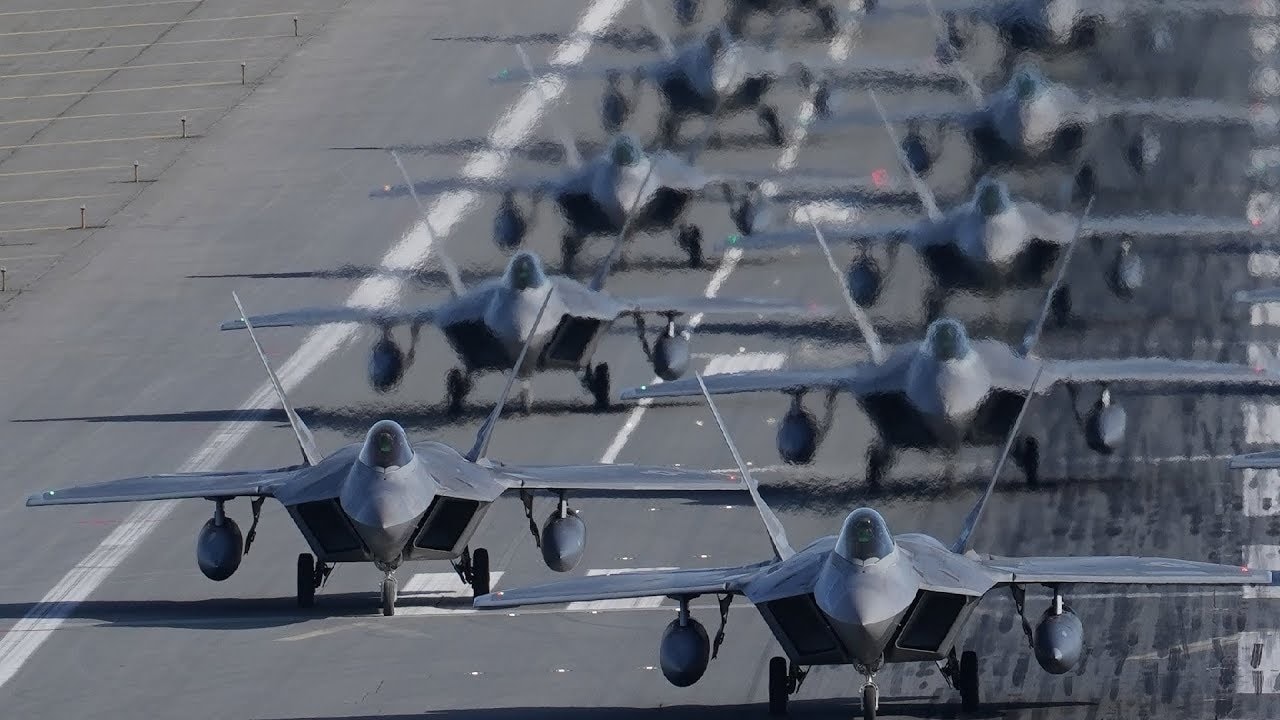The United States Air Force is deploying more than two dozen Lockheed Martin F-22 Raptor fighter jets to Guam and Tinian islands to take part in the upcoming Operation Pacific Iron 2021 exercises as part of a show of strength against Chinese aggression in the western Pacific.
The Pacific Air Forces in Hawaii will reportedly send approximately twenty-five of the fifth-generation stealth aircraft from the Hawaii Air National Guard and from Joint Base Elmendorf-Richardson, Alaska.
“We have never had this many Raptors deployed together in the Pacific Air Forces area of operations,” Gen. Ken Wilsbach, Pacific Air Forces commander, told CNN on Friday.
The deployment of the advanced aircraft was likely meant as a message to Beijing amidst increasing tensions over Taiwan and the South China Sea, Carl Schuster, a Hawaii-based defense analyst, also told CNN last week. Schuster, who is a former director of operations at the U.S. Pacific Command, told the news channel that normal F-22 deployments consist of just six to a dozen aircraft.
“The Pacific Air Force is demonstrating that it can deploy as many or more fifth-generation aircraft into the theater on short notice than (China) currently has in its entire inventory,” said Schuster.
Pacific Iron
The Pacific Air Forces and Air Combat Command are conducting the Pacific Iron 2021 exercises later this month to showcase the U.S. Air Force’s strategic flexibility. It will involve more than thirty-five aircraft and approximately 800 airmen deployed to the U.S. Indo-Pacific’s Command’s area of responsibility.
“Approximately ten F-15E Strike Eagles from the 389th Fighter Squadron, 366th Fighter Wing at Mountain Home Air Force Base, Idaho; approximately 25 F-22 Raptors from the 525th Fighter Squadron, 3rd Wing at Joint Base Elmendorf-Richardson, Alaska, and the 199th Fighter Squadron, 154th Wing, Hawaii Air National Guard at Joint Base Pearl Harbor Hickam, Hawaii; and two C-130J Hercules from the 374th Airlift Wing from Yokota Air Base, Japan will conduct combat dispersal operations in Guam and Tinian,” the Pacific Air Forces said in a statement.
The exercise is a demonstration to China and other potential adversaries of the U.S. capability to quickly mass fighter aircraft to distant regions around the world.
Raptor Training
The F-22 Raptor, with its stealth technology and numerous onboard sensor systems, is regarded as one of the most advanced combat aircraft in service today. The Raptor was developed as the result of the United States Air Force’s Advanced Tactical Fighter (ATF) program, which sought to develop a new air superiority fighter that could also be used in ground attacks, electronic warfare, and even provides signal intelligence capabilities. The Air Force had sought to buy a total of 750 of the advanced aircraft – the first fifth-generation fighter – but in 2009, the program was cut back to just 187 units due to the high costs.
The last F-22 was delivered in 2012.
Despite the fact that the program was cut short, the Air Force still considers the F-22 to be a critical component of its tactical airpower. This is noted in the fact that the Raptor has been deployed to Hawaii and Alaska, where in recent weeks it has deployed to intercept and escort Russian aircraft that have flown a little too close to American airspace.
Now after a show of strength against Russia, the F-22 Raptor will be headed to Guam and Tinian to serve as a very serious warning to China.
Peter Suciu is a Michigan-based writer who has contributed to more than four dozen magazines, newspapers and websites. He regularly writes about military small arms, and is the author of several books on military headgear including A Gallery of Military Headdress, which is available on Amazon.com.

